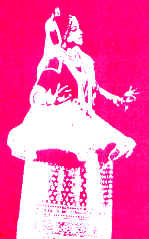|
|
Another important classical dance of Northern India is Manipuri, originating in Northeastern State of Manipur.
Principal items in Manipuri repertoire are Ras dances, of which there are four main types, all of which pertain to Krishna and are performed only by women and girls.
Ras dances are essentially lyrical and carry extremely lithe and sinuous movements and bends, with soft, cushioned steps. Costumes and ornaments in Ras are colorful and glittering.
Apart from the leisurely Ras dances, Manipuri tradition also incorporates certain items, known as Choloms, which are vigorous and which often display quick and sharp movements and dexterous footwork.
Important in this category are Pung Cholom, danced by men holding drums, and Kartal Cholom, performed by men or women with cymbals in their hands.
Choloms are all part of Sankeertana of Manipuri, which is tradition of singing and dancing directed towards achieving communion with Lord.
Yet, another dance in Manipuri category is Lai Haraoba, which consists of re-enactment of the story of a prince and a princess, who symbolize ideal lovers in mythology of Manipuris.
Ras dances are performed only on certain fixed days in the year, Lai Haraoba takes place in summer months, while Choloms are presented in any time, but more particularly on occasions of domestic or social importance, such as birth of a son, wedding or funeral.
Principal performers of Manipuri are in Manipur, and these are scores of them.
Among artistes of Manipuri, who are known to India, are Jhaveri sisters, Ritha Devi and Singhajit Singh.

|
|

